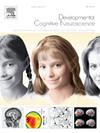Beyond motor learning: Insights from infant magnetic resonance imaging on the critical role of the cerebellum in behavioral development
IF 4.9
2区 医学
Q1 NEUROSCIENCES
引用次数: 0
Abstract
Although the cerebellum is now recognized for its crucial role in non-motor functions such as language, perceptual processes, social communication, and executive function in adults, it is often overlooked in studies of non-motor behavioral development in infancy. Recent magnetic resonance imaging (MRI) research increasingly shows the cerebellum is key to understanding the emergence of complex human behaviors and neurodevelopmental conditions. This review summarizes studies from diverse MRI modalities that link early cerebellar development from birth to age two with emerging non-motor behaviors and psychiatric symptomatology. Our focus centered on both term and preterm infants, excluding studies of perinatal injury and cerebellar pathology. We conclude that the cerebellum is implicated in many non-motor behaviors and implicit learning mechanisms in infancy. The field’s current limitations include inconsistencies in study design, a paucity of gold-standard infant neuroimaging tools, and treatment of the cerebellum as a uniform structure. Moving forward, the cerebellum should be considered a structure of greater interest to the developmental neuroimaging community. Studies should test developmental hypotheses about the behavioral roles of specific cerebro-cerebellar circuits, and theoretical frameworks such as Olson’s “model switch” hypothesis of cerebellar learning. Large-scale, longitudinal, well-powered neuroimaging studies of typical and preterm development will be key.
超越运动学习:婴儿核磁共振成像对小脑在行为发展中的关键作用的洞察
虽然小脑在成人的语言、知觉过程、社会沟通和执行功能等非运动功能中起着至关重要的作用,但在婴儿非运动行为发展的研究中,小脑经常被忽视。最近的磁共振成像(MRI)研究越来越多地表明,小脑是理解复杂人类行为和神经发育状况出现的关键。这篇综述总结了从出生到两岁的早期小脑发育与出现的非运动行为和精神症状的不同MRI模式的研究。我们的研究重点是足月和早产儿,不包括围产期损伤和小脑病理的研究。我们的结论是,小脑参与了婴儿期的许多非运动行为和内隐学习机制。该领域目前的局限性包括研究设计的不一致性,缺乏黄金标准的婴儿神经成像工具,以及小脑作为统一结构的治疗。下一步,小脑应该被认为是一个结构更感兴趣的发展神经影像学社区。研究应该验证关于特定脑-小脑回路行为作用的发展假设,以及Olson关于小脑学习的“模型转换”假设等理论框架。对典型发育和早产发育进行大规模、纵向、有力的神经影像学研究将是关键。
本文章由计算机程序翻译,如有差异,请以英文原文为准。
求助全文
约1分钟内获得全文
求助全文
来源期刊

Developmental Cognitive Neuroscience
NEUROSCIENCES-
CiteScore
7.60
自引率
10.60%
发文量
124
审稿时长
6-12 weeks
期刊介绍:
The journal publishes theoretical and research papers on cognitive brain development, from infancy through childhood and adolescence and into adulthood. It covers neurocognitive development and neurocognitive processing in both typical and atypical development, including social and affective aspects. Appropriate methodologies for the journal include, but are not limited to, functional neuroimaging (fMRI and MEG), electrophysiology (EEG and ERP), NIRS and transcranial magnetic stimulation, as well as other basic neuroscience approaches using cellular and animal models that directly address cognitive brain development, patient studies, case studies, post-mortem studies and pharmacological studies.
 求助内容:
求助内容: 应助结果提醒方式:
应助结果提醒方式:


